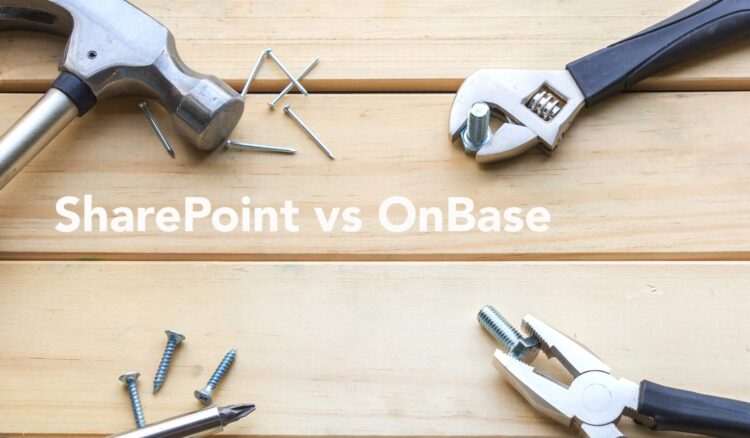Cloud data storage platforms like the Hyland Cloud have been rapidly growing in popularity among organizations across industries in recent years. A seamless content services approach is a critical component of a successful digital transformation. According to a study by IDG, the cloud itself plays a fundamental role in achieving digital transformation goals, while adding value to IT operations at the same time. This study also found that 58% of enterprises report that they are migrating content to the cloud.
The Hyland Cloud is a privately managed hosting platform for Hyland’s content services offerings, including OnBase. It’s designed especially for information management with security as the top priority.
Here’s why organizations are running to the Hyland Cloud solution and the Five Steps to Migrating to the Hyland Cloud.
Benefits of Cloud
There is no shortage of benefits when it comes to migrating to the cloud, and the Hyland Cloud is no exception. The Hyland Cloud is flexible, dynamic, and can save organizations considerable amounts of money.

Security
Migrating to the cloud means peace of mind for your organization in more than one way. First, cloud-based enterprise solutions offer excellent disaster recovery abilities that prepare you for the worst. If disaster strikes, cloud solutions allow you to replicate content in multiple locations. It also helps your organization to get your vital systems up and running promptly. These disaster recovery implementations come tailored to your Hyland application at no added cost. This way, you can get back to business as usual sooner. IDG’s study also found that 67% of survey respondents reported disaster recovery as the most appealing and persuasive advantage of cloud-based enterprise solutions.
Additionally, private, managed clouds offer excellent data security. The Hyland Cloud features individual encryption, which means that your data is securely protected while in use, in transit, and while untouched.
Scalability and Flexibility
As your business expands and changes, your data storage needs to grow with you. The Hyland Cloud can accommodate the storage requirements for any business size, from small to enterprise. Whether you need less than a single gigabyte of storage or several hundreds of terabytes, this solution is fully capable of supporting your needs. The Hyland Cloud applies to a wide variety of industries, from government to financial services, insurance, and commercial.
Management Resources
Hyland Cloud services give organizations access to over 125 certified Hyland Cloud experts in security, network, infrastructure, development, support, compliance, database services, and operations. These professionals are available to maintain your Hyland Cloud solution 24/7/365. This lifts a significant burden off your IT staff and the on-demand support means you aren’t constrained by hours of operation.
Cost
When you host your software solutions in the cloud, your operational costs decrease. Hosting your solutions on-premise comes at a notable operational cost from staffing and overtime to maintenance and physical security. However, with the cloud, these costs melt away, saving both money and resources in the process to the delight of cloud users. IDG’s study tells us that 55% of respondents reported cost savings as the most appealing and persuasive advantage of cloud-based enterprise solutions.
Customers also enjoy being able to step back from installation and upgrade efforts. Hyland manages all application installations and upgrades for you, thus unlocking valuable time.
Compliance
Hyland offers thorough security controls and government insight. This way, you can keep up with all your compliance requirements, like HIPAA, NIST, GDPR, PCI, ISO, GCIS, and many more. That’s just one less thing for you to worry about, thanks to your cloud solution.
Data Reliability and Visibility
You can store your data in-region, as Hyland has numerous global data centers spanning four continents. Theses data centers are responsible for keeping your data both physically and digitally safe. Hyland supports the needs and requirements unique to all 42+ countries that it serves. As a result, you always know where your data is located. The Hyland Cloud has historically been able to offer customers 99.9% data availability. This benefit is possible due to the rigorous data redundancy and backup protocols that Hyland prioritizes.
5 Steps to Migrating to the Hyland Cloud
1. The Information Handoff:
To make your transition to the Hyland Cloud as smooth as possible, Naviant will provide expert guidance from start to finish. To begin the migration progress, you will work with Naviant to define the migration plan. This plan will provide Hyland with the critical information they need to configure your cloud solution. The methods for supplying a backup of your data will depend on the size of the data (database, your disk groups, and any other files that your solution may need) that you are migrating. It’s important to migrate only the data that is within your corporate retention policy. Additionally, you should be sure to remove any old data before performing the data extract. When you properly execute and plan for your migration plan, you can be sure that only the valuable business data is migrated to the Hyland Cloud without leaving anything behind.
2. Testing and Tracking:
When Hyland receives the configuration information, they will begin setting up your new cloud solution in their secure environment. Then, they will import your data. Next, you will start testing your solution with Hyland. It is best practice to track each testing scenario. This measure will ensure that all business processes, user groups, and data are accessible. Additionally, you will perform import process testing during this phase to ensure you can securely upload new data. This way, you can be sure that you will not only be able to process existing content but securely add new content. And to keep business moving as usual, you can continue to use your old on-premises solution during the testing period.
3. Setting the “Go Live” Date:
When you’re satisfied with your solution’s features and workings and have successfully tested all your test cases, it’s time to pick a date. Remember, your production solution must go offline during the “go live” process itself. Note, this step comes after the testing period for a reason. Hyland recommends against setting overly ambitious “go live” dates too far in advance. This advice comes from those unpredictable events that can occur that cause delays.
4. Final Preparations:
To prepare for your upcoming launch, you must stop using your on-premises solution. This measure allows for a cleaner transition. Be sure that all system users are aware of this so that no one interrupts the big “go live” day by creating a transaction in the old solution. You must send Hyland a fresh database backup and disk group data that will be an exact replication of your production system.
5. One Last Round of Testing:
Your data and final disk groups are in good shape, and your database is fully restored. Now it’s time for the last round of testing. At this point, your solution configuration will be configured as you tested and will contain all your production data. However, be sure to double-check to make sure your system is running smoothly and all the data is accessible. Finally, you can release the system to your end-users to work with the same robust enterprise OnBase system previously hosted in your data center now moved to Hyland’s secure cloud environment.
After you have completed these steps, your solution will be live in the Hyland Cloud. You can now join the ever-expanding list of organizations that are benefitting from the perks of moving to the cloud.
If you still feel uncertain or have more questions about taking the plunge, know that we will be there to guide you every step of the way. Migrating to the cloud is a landmark in any organization’s digital transformation.
Want More Content Like This?
Subscribe to the Naviant Blog. Each Thursday, we’ll send you a recap of our latest info-packed blog so you can be among the first to access the latest trends and expert tips on workflow, intelligent automation, the cloud, and more.






